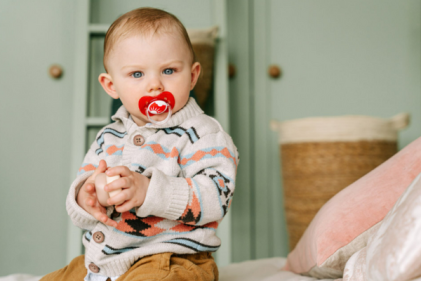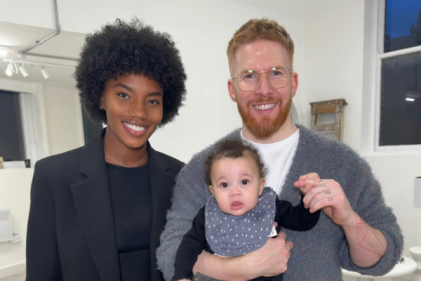As Popeye knew well, iron is vital for growing bones and muscle formation. But it's also really important for the formation of red blood cells, which help transport oxygen around the body. Without that brain development will suffer.
Without enough iron in their diet, kids are at risk of becoming anaemic or being prevented from growing to their potential.
They can also become tired and irritable, and tired kids don't learn as they should. They lack the energy reserves to stay focused, which is a problem - the ability to see things through is a valuable life skill.
1. What are the symptoms of anaemia?
Severe anaemia can leave your child with blue-tinged eyes, brittle or peeling nails, a very pale appearance and sparse, thin hair growth.
However, everyday anaemia can show itself with the following symptoms:
- shortness of breath
- craving non-edible foods (Pica)
- a decrease in their appetite
- feeling tired
- a sore tongue
- headaches and dizziness
2. How can I ensure my toddler is getting enough iron?
While you should never force-feed a child, it's a good idea to encourage them to adopt healthy eating habits, and to do what you can to include iron-rich foods in their diet.
Toddlers aged 1-3 need 7mg of iron per day. Three ounces of lean beef has about 3mg of iron, and one slice of wholewheat bread has 1mg.
Here are some simple tips to ensure your toddler gets enough iron...
3. Limit their milk intake
Toddlers who drink a lot of milk aren't as hungry for meals. They get so many calories from their milk - whether it's cows or formula milk - that they don't want to eat real food.
Cow’s milk is low in iron and is not a good source of this important mineral.
Toddler formula milks contain iron, but not in an ideal format. Toddler milk is also high in kilojoules, which fill up small tummies so they don’t want to eat.
4. Serve 'heme iron' rich foods
While it's possible to get your RDA of iron from vegetable sources, the iron in meat - heme iron - is the most easily absorbed.
Red meat (beef, pork) is generally considered to be the best source, but there are other foods rich in heme iron including poultry (chicken, turkey), fish (salmon, tuna) and eggs.
5. Serve foods rich in 'non-heme' too
Non-heme iron is the kind that comes from plant sources. Because of it chemical structure, it's not as easy for our intestines to absorb.
Still, both sources are worth eating. In fact, heme iron helps improve the absorption of non-heme iron, so it's good to have both in your child's diet - and your own.
Good sources of non-heme iron include prunes and prune juice, raisins, figs, peanut butter, beans (black, kidney, pinto), tofu, hummus, leafy green vegetables (e.g. broccoli, kale) and porridge. Some pastas, breads and cereals are also fortified with iron.
6. Mix and match with other nutrients
Vitamin C helps iron absorption, so increase the amount of iron that your toddler's body gets from plant sources by pairing iron-rich foods with foods full of vitamin C.
Good match-ups include iron-fortified cereal and orange juice, porridge with strawberries, hummus with sliced tomatoes and red peppers, and iron-enriched pasta with broccoli.
7. Consider a supplement
If your toddler doesn’t eat much meat or other iron-rich foods, you may need to offer an iron supplement.
But talk with your doctor first so you don’t accidentally end up overcompensating...










